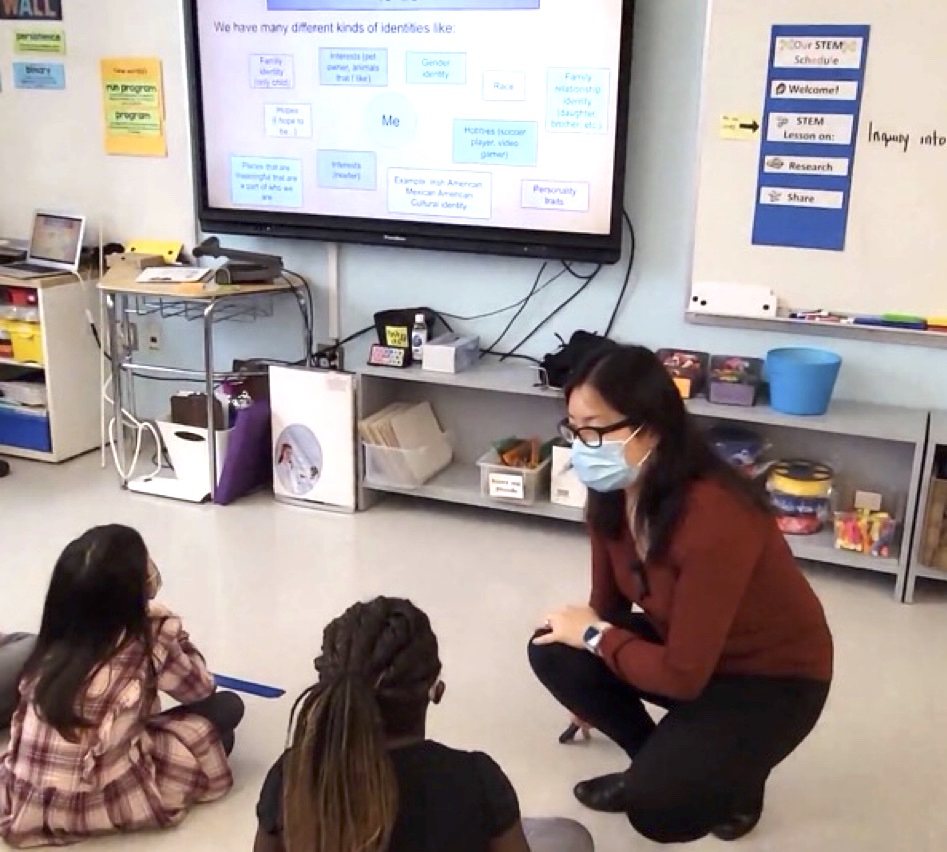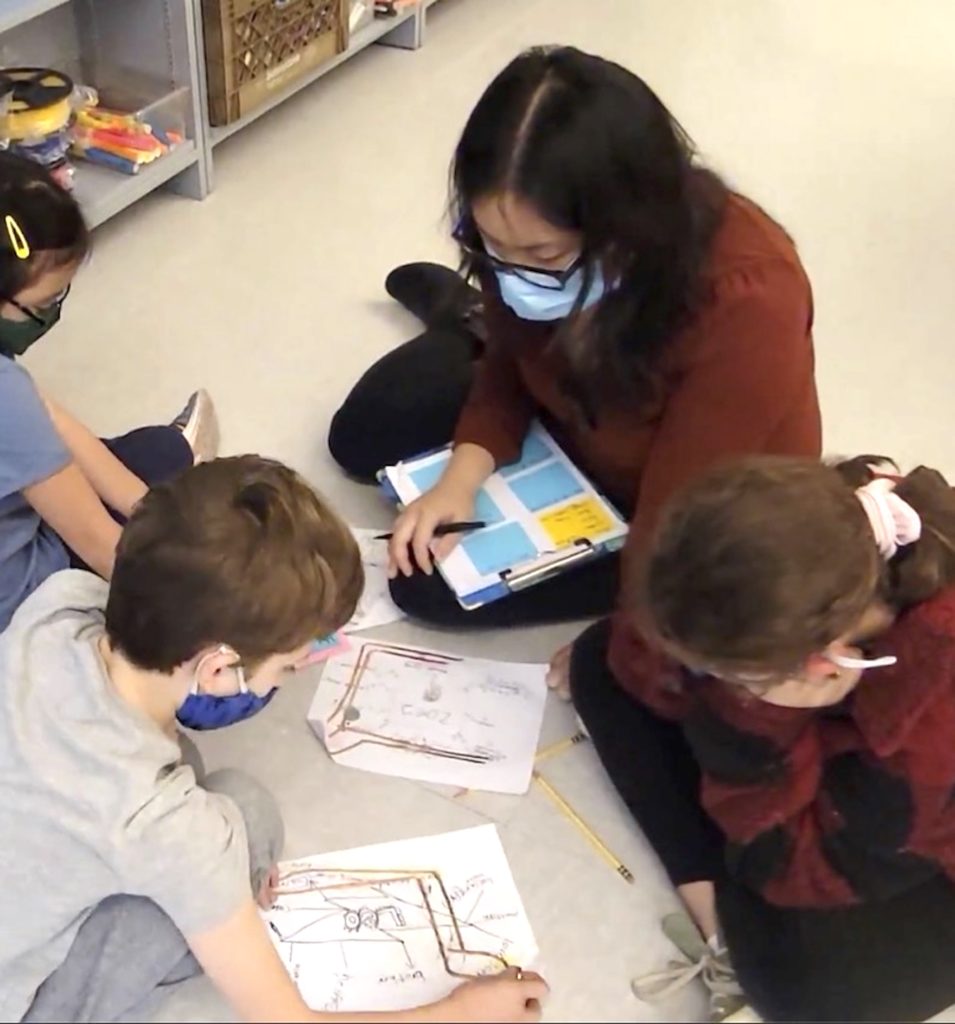A List to Teach By
Recently, we caught up again with Shiela Lee, STEM teacher and technology coordinator at Beekman Hill International School, PS 59, New York City, and picked up where we left off with the Featured Educator writeup. This time we opened up the discussion so we could learn more from her on teaching and learning at large. This post is organized like a “Top Ten” – we began with some prompting words, phrases, ideas, then Shiela filled in the blanks, sharing what drives her and supports her as an educator. Read a master teacher on her principles and practices.

1. <ALWAYS…>
…be mindful of your emotions and set routines to help with classroom management. From my wide-eyed curious Pre-Kindergarteners to my sharp and sassy fifth graders, each age has its unique ways of interacting with their peers and adults. Since students have returned from the pandemic, ensuring my classroom is respectful and safe has been a priority that begins with modeling kindness and agreeing on norms. There have been moments when I was not modeling my best self to students and I’ve learned that even setting limits and boundaries for kids is something they are learning from you, the teacher. As I’ve grown over the years, I’ve learned that taking a mindful moment to be with your emotions and articulating what you are feeling and why helps students process their own emotions. I use a lot of American Sign Language (ASL) in my classroom, too, to help with classroom management and nonverbal communication. It lets students quickly signal to me if they need something and also lets me communicate with them without contributing to the noise. The structure and routines I set every class period give students a sense of familiarity, a sense of comfort, and a striving to excel to be the best versions of themselves.
2. <NEVER…>
…compromise how you want to be as a teacher with the habits of others. Colleagues, family, friends, and outside consultants are all entitled to their own opinions about teaching. However, I’ve learned that to be the best teacher you can be, you must be comfortable with your own teaching style. I’ve learned that you are not the same person or teacher as the one next door so it’s important to be comfortable with who you are, your history, how you talk, how you interact with students, and how you teach. As we evolve and learn with each new class, I think it’s important to take stock of how you have felt challenged and hold onto the moments when you felt good about a decision and learn from the moments when you felt you could have done better. There is no mold for how a teacher should be, only a unique vision for how you want to be as a teacher.
3. <PAY ATTENTION to…>
…how you are growing. We are all growing as teachers and people. I think it can be a wonderful feeling to see the growth of our students, but take a moment and take stock of how you have grown as an educator as well. Whether it is each day or even the past hour, celebrate those moments with yourself where something went well and recognize how you became closer to the type of teacher you want to be.

4. <BE OPEN to…>
…setting boundaries around your time. Even before the pandemic happened and teachers became video editors of their own lessons, teachers have always brought work home with them. I don’t know one teacher who hasn’t spent time outside of their school hours to lesson plan, grade work, or just follow up with parents. Our jobs are very demanding. Time is finite and you must determine how you want to spend your time. When I first began teaching and when I moved into my STEM role, I certainly had to spend more time lesson planning and designing the trajectory of a unit. With time, the content became more familiar and classroom management became more natural. I still often tweak a lesson here and there depending on how the class is doing. If you’re a first-year teacher, be patient as you continue to set boundaries around work. If you’re a veteran teacher, you already know the value of setting boundaries.
5. <REMEMBER to…>
…continue the work of equity each and every day and anchor your lessons to socially relevant issues. While the celebration of ethnic heritage months has been written about, I think it’s very important as educators to continue the work of equity every day. In my STEM class, we anchor our conversations around segregation with Kindergarteners by reading books about Dorothy Vaughan and Mary Jackson, pioneers who not only helped our progress in space technology but also helped advance issues of equality at NASA. Very early on, students are able to articulate how unfair it is that people were discriminated against based on their skin color. We discuss how our skin color comes from our ancestors, the sun, and melanin. We celebrate the beauty of our skin colors and recognize the depth of accomplishment our STEM BIPOC (Black, Indigenous, People of Color) heroes achieved and continue to achieve. As events unfold around our world and in our nation, it’s important to create lesson plans that help our students think critically about those issues and connect it with the work of present and past BIPOC figures.
6. <LOOK for X and Y because THESE THINGS SUPPORT Z…>
…look to surround yourself with positive people who are excited to innovate and teach because these people will support you when you are feeling disrespected and unmotivated. These people are either in teaching or are your cheerleaders because they understand the value of teachers. There are moments in a teacher’s career where you feel challenged, either because a lesson did not go as well as you planned or because a parent or administrator said something unexpected. In those moments, it is very important to remember that you are valued and you have people who support you.
7. <DON’T BE AFRAID to…>
…ask for help. As I grew in my profession, I asked other teachers for their thoughts on a lesson or about their class and how to support a student(s). When I ask teachers at my school for thoughts on a lesson, I love hearing their ideas because they often make my lessons better. Additionally, when I am having difficulty with a class or a student, I will ask the classroom teacher how I can use similar language they use or how we can be on the same page to deliver consistent routines. I also collaborate with the family of a student to see if a family issue at home is impacting their behavior and work at school. If you are struggling with the workload, it helps to also request help from your administration. While I know not all teachers feel comfortable doing this, it’s important for administrators to know when their teachers are struggling because of burdensome paperwork or other issues. It’s important to vocalize your concerns so your needs are met in a professional manner.

8. <REMEMBER the BEST WAY to…>
…teach is to remember that not every lesson is going to go perfectly according to plan. As much as we teachers like to craft a well-rounded, universally designed lesson, oftentimes our students’ responses may take us on a detour and we will need to modify the subsequent lessons to reflect their curiosities, interests, behaviors, and questions. This is okay. Teachers often know this, but parents and administrators forget how dynamic teaching can be and how often we need to modify our lessons. Students are not going to learn everything in one lesson but over a series of lessons connected together by how you weave and probe them to be rigorous, to be curious, and to build upon prior knowledge. Don’t sweat the mistakes you made in one lesson. Instead, recognize the bigger goal of developing your students to be lifelong learners.
9. <WHEN IT COMES to FEELING OVERWHELMED by…>
…by the insurmountable amount of tasks, standardized testing demands, student socio-economic differences, inequitable PTA budgets across the district, challenges from parents or administrators, etc. be sure to be an advocate for teachers. While we teach our students to be activists and take a stance on what they are learning, it is also important that we teachers make our voice heard. Whether that means joining your union or writing an op-ed with other teachers in your local newspaper, many of the issues we are concerned about like fair funding in schools should involve teachers’ voices. Turn the feeling of being overwhelmed into action and find like minded folx to support your work.
10. <WHEN DOING HANDS-ON WORK, YOU HAVE to…>
…do it yourself first. Oftentimes, when I plan a hands-on project, I do it myself first so I can anticipate and predict the challenges some of my students might face and create scaffolds for them. Many things in life require rehearsals and I consider this just a rehearsal for helping a lesson or lessons go smoothly.
A last word

<BE MINDFUL…
When I used to do mindfulness meditation with my students, there was one lesson that I absolutely loved from the Mindful Schools curriculum. Hold up two fingers with both of the fingers touching, side by side. One finger represents a trigger and the other finger represents a reaction. Typically, a reaction happens almost immediately next to the trigger, which is why they’re so close together. When we practice being mindful and taking mindful breaths, we create a space between the trigger and the reaction. When I create that space, the fingers move apart and create a “V” where there is now a space for us to reflect and think about a response instead of having a reaction.
This visual of the two fingers spreading apart and creating a mindful space for yourself is so powerful for my students. When I feel myself getting frustrated or anxious, I just walk the entire class through some breathing exercises and show them this visual that this is what we’re aiming towards.
Special thanks
…to Shiela for making time to share these comments. Find her at shielalee.com to learn more about her teaching. Don’t miss Student Agency Through Engineering, a co-authored article published in February 2022 in the Science and Children Journal, NSTA’s award-winning, peer-reviewed practitioner journal for elementary-level science teachers and a her CSTA.org post, Let’s Hit Refresh, a 2021 reflection and response piece on her learning journey.
